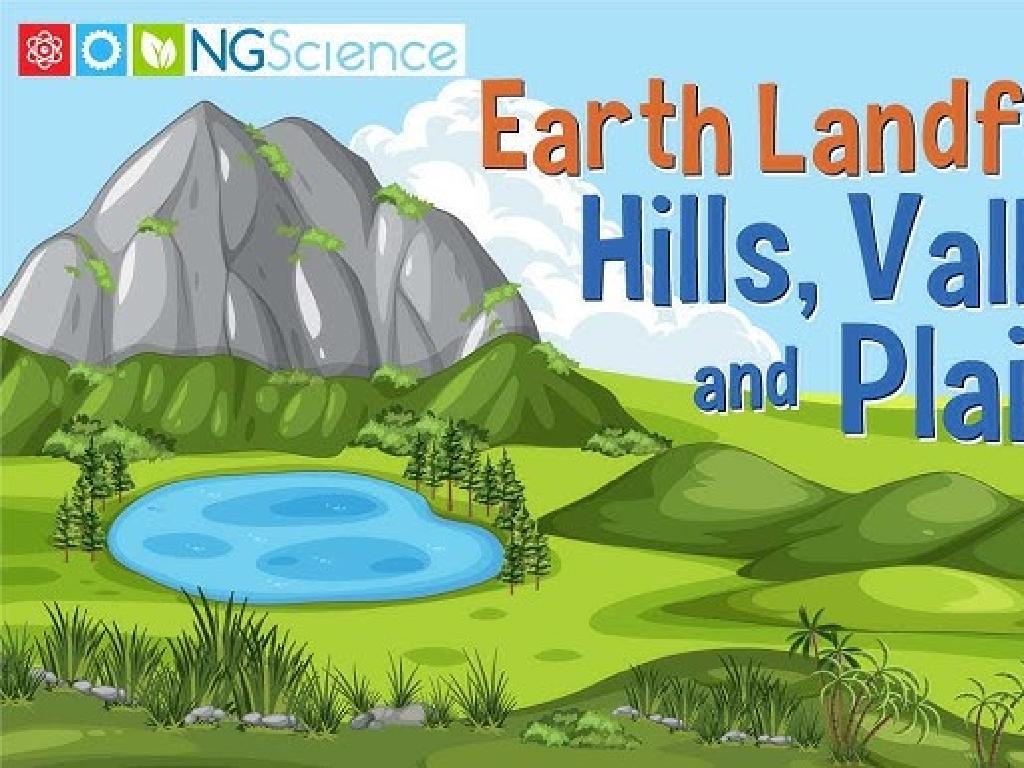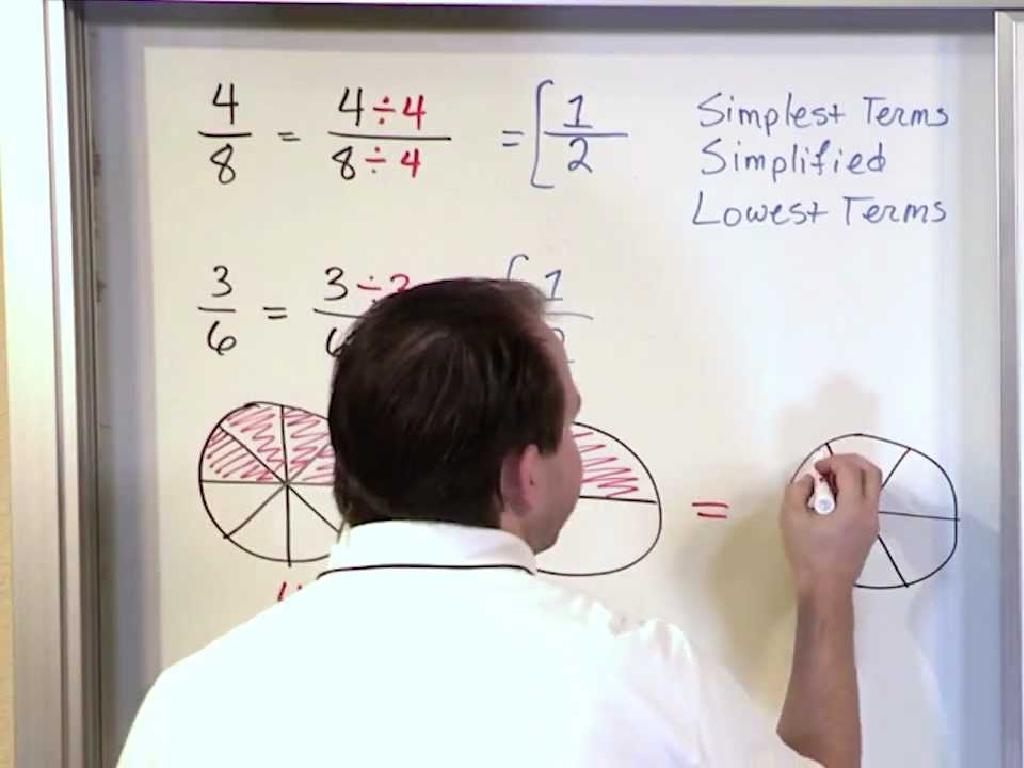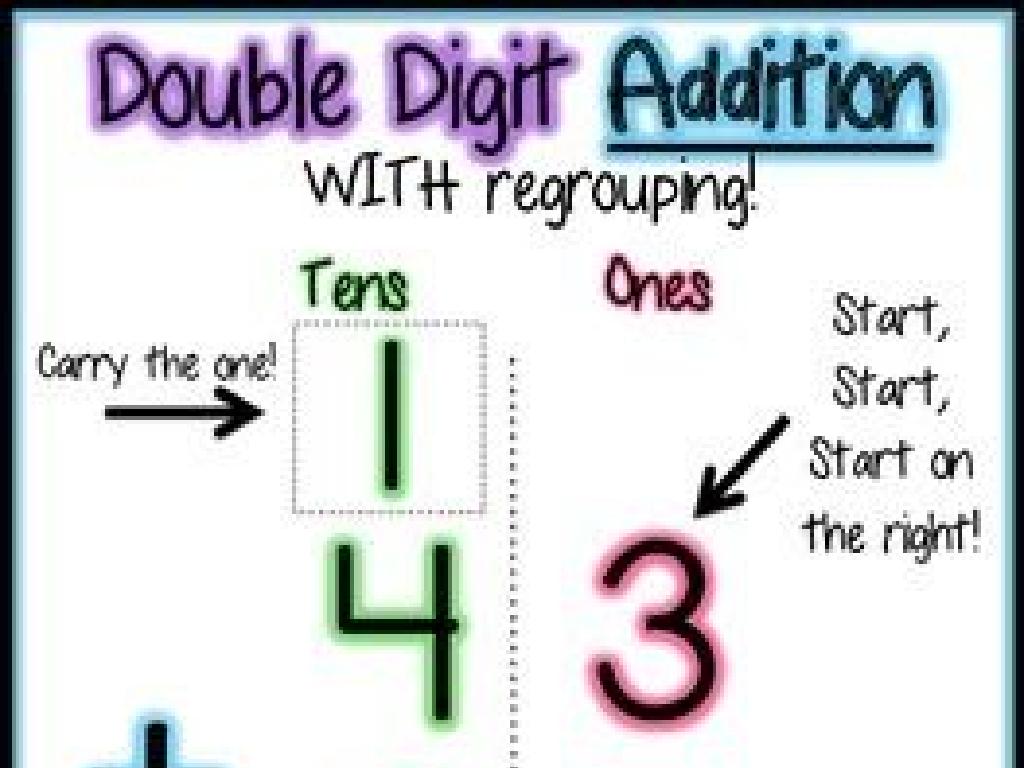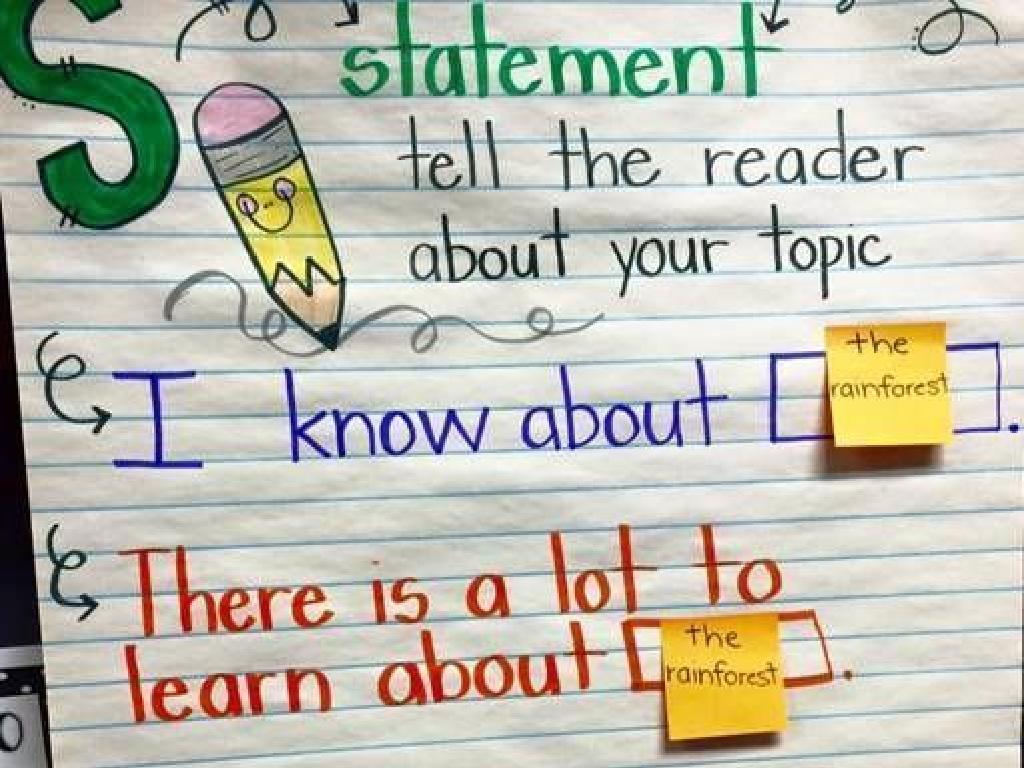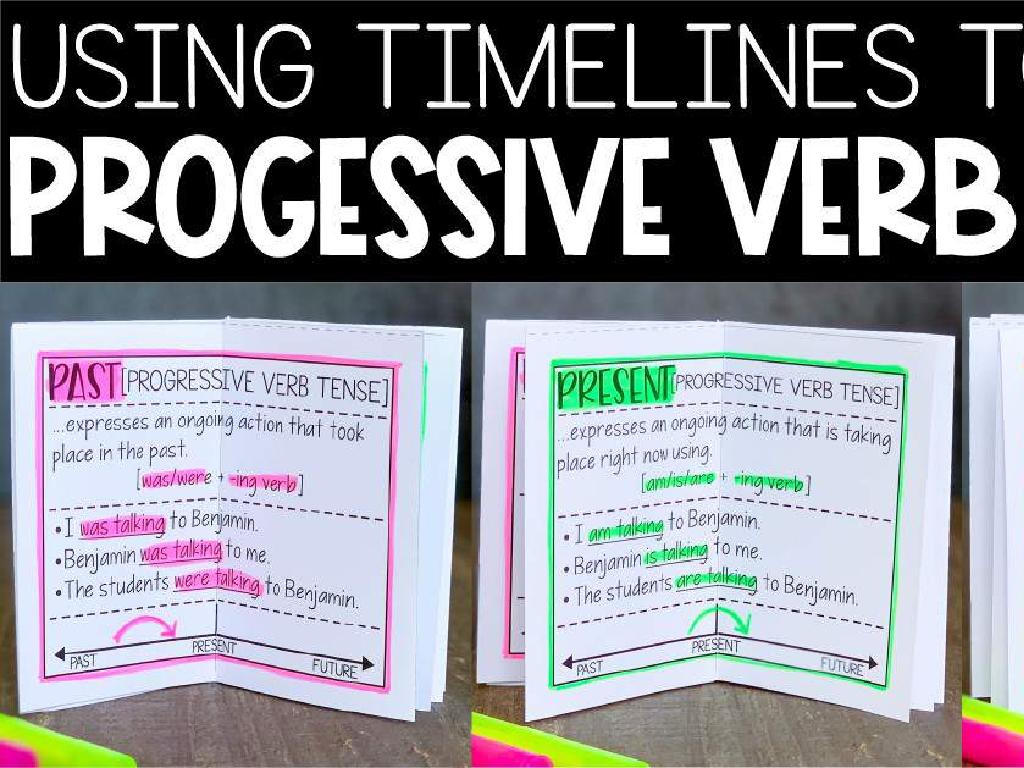Identify Prepositions
Subject: Language arts
Grade: Fifth grade
Topic: Prepositions
Please LOG IN to download the presentation. Access is available to registered users only.
View More Content
Welcome to Prepositions!
– Understanding prepositions
– Prepositions connect nouns/pronouns
– They show how nouns/pronouns relate to others
– Common prepositions: above, below, beside
– ‘The cat is above the table’ shows location
– More examples: between, in, on, under
– ‘She sat between Jim and Pam’ shows position
|
This slide introduces the concept of prepositions to the students, explaining that prepositions are words that establish relationships between nouns or pronouns and other elements within a sentence. They often indicate time, location, direction, or method. Provide clear examples for each preposition mentioned, and use visual aids or gestures to help students understand the spatial or temporal relationships that prepositions describe. Encourage students to come up with their own sentences using the given prepositions to reinforce their understanding. The goal is for students to recognize and use prepositions correctly in their writing and speech.
Exploring Prepositions in Sentences
– Prepositions in sentence placement
– Describing locations with prepositions
– Words like ‘above’, ‘below’, ‘beside’, ‘inside’
– Describing directions with prepositions
– Words like ‘toward’, ‘away from’, ‘into’, ‘out of’
– Practice finding prepositions
– We’ll identify prepositions in example sentences together in class
|
This slide aims to help students understand where prepositions can be found within a sentence and how they are used to describe locations and directions. Emphasize that prepositions are versatile words that link nouns, pronouns, and phrases to other words in a sentence. Provide clear examples showing prepositions in different sentence positions. During the class, engage students with interactive activities where they identify prepositions in various sentences. Encourage them to explain the role of each preposition in indicating where something is or the direction in which something is moving. This will help solidify their understanding of how prepositions function in everyday language.
Exploring Types of Prepositions
– Simple Prepositions: common words
– Examples: at, by, for, in, of, off, on, out, through, to, with
– Compound Prepositions: two or more words
– Examples: according to, because of, instead of, near to
– Phrase Prepositions: group of words
– Examples: in front of, on behalf of, in addition to
– Practice identifying each type
|
This slide introduces students to the different types of prepositions. Simple prepositions are the most common and are typically short words that show relationships between nouns/pronouns and other words. Compound prepositions consist of two or more words that function as a single preposition. Phrase prepositions are groups of words that together act as a preposition. Provide examples for each and encourage students to come up with their own examples. In the next class, have an activity where students identify the type of prepositions in sentences from a text or story they are familiar with.
Identifying Prepositions in Sentences
– Practice finding prepositions
– Example: ‘The cat is under the table.’
– ‘Under’ is the preposition, showing location
– Activity: Locate the preposition
– Find the word that connects things in the sentence
– Explain the preposition’s role
– Describe how the preposition links the cat to the table’s location
|
This slide is designed to help students practice identifying prepositions within the context of a sentence. Start by explaining that a preposition is a word that shows the relationship between nouns or pronouns and other words in a sentence. Use the example provided to illustrate how ‘under’ acts as a preposition that indicates the location of the cat in relation to the table. For the activity, students should find the preposition in a sentence and explain the relationship it establishes. This exercise will enhance their understanding of how prepositions function to connect ideas in writing. Encourage students to think about the spatial or temporal relationships that prepositions can indicate. Provide additional sentences for practice and ask students to share their findings.
Prepositions and Their Objects
– Prepositions link to objects
– A preposition connects with a noun or pronoun
– ‘To the store’ has ‘to’ as preposition
– In ‘She walked to the store’, ‘to’ connects with ‘store’
– ‘Store’ is the object of ‘to’
– The word ‘store’ is what ‘to’ is referring to
– Let’s identify objects in sentences
– We’ll practice finding objects in different examples
|
This slide introduces the concept that prepositions always have objects, which are either nouns or pronouns. Use the example ‘She walked to the store’ to illustrate how ‘to’ is the preposition that connects to its object ‘store’. Explain that the object is the word the preposition is referring to or showing a relationship with. Encourage students to look for the noun or pronoun that follows a preposition in sentences. As an activity, have students find and underline prepositions and their objects in example sentences. This will help them understand how prepositions function within the structure of a sentence.
Prepositions in Action
– Prepositions link actions
– Example: Dog jumped over the log
– ‘Over’ connects the jumping action to the log
– ‘Over’ shows how the dog jumped
– It tells us the direction of the jump
– Discuss the role of ‘over’
– Why is ‘over’ important in this sentence?
|
This slide aims to help students understand the role of prepositions in describing actions. Prepositions are words that show the relationship between a noun or pronoun and other words in a sentence. The example ‘The dog jumped over the log’ illustrates how the preposition ‘over’ is used to describe the action of the dog in relation to the log. It’s crucial for students to recognize that without the preposition, the sentence would lose the specific detail of how the dog moved. Encourage students to think of other actions and how different prepositions can alter the meaning of those actions. For instance, ‘The dog jumped under the table’ or ‘The dog jumped onto the bed.’ Discuss with the class why the preposition ‘over’ is essential in the example sentence and what it tells us about the dog’s action.
Class Activity: Preposition Scavenger Hunt
– Find objects and describe locations
– Use prepositions like ‘under’, ‘over’, ‘between’
– Work in pairs for creative sentences
– Two heads are better than one – get creative!
– Share your sentences with the class!
– Practice public speaking and listening skills
|
This interactive activity is designed to help students identify and use prepositions in a fun and engaging way. Students will search for objects in the classroom and write sentences that describe the location of these objects using prepositions. Encourage them to be as creative as possible and think outside the box. Working in pairs allows students to collaborate and learn from each other. After they have written their sentences, each pair will share them with the class, which will help in reinforcing their understanding of prepositions and also enhance their public speaking and listening skills. As a teacher, facilitate the activity by providing guidance and ensuring that each pair participates. Possible variations of the activity could include using classroom items, personal belongings, or pictures from a book as the objects to describe.
Conclusion: Prepositions Mastery & Homework
– Excellent work on prepositions!
– Write a story for homework
– Create a tale and find prepositions
– Underline each preposition used
– This helps identify their usage in context
– Prepositions enhance details
– They add depth to your stories
|
Today’s class focused on identifying prepositions and understanding their role in writing. For homework, students are tasked with writing a short story where they will practice using prepositions by underlining them. This exercise will help reinforce their ability to recognize and use prepositions effectively, enhancing the detail and clarity of their writing. Encourage creativity in their stories and remind them that prepositions are the words that link nouns, pronouns, or phrases to other words within a sentence. They often indicate direction, time, location, or relationship. When reviewing the homework, discuss how the prepositions contribute to the vividness of the narrative.

